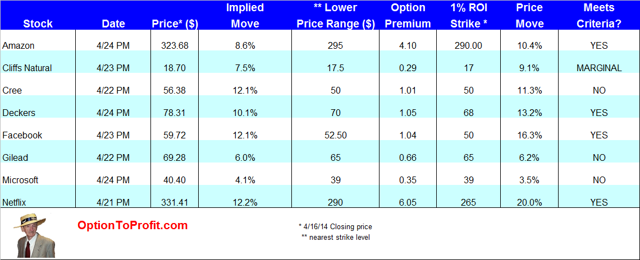 About a month ago we got a much needed gift from Federal Reserve Governor James Bullard, who at the depths of a nearly 10% market decline gave some reason to believe that the Federal Reserve may not have been done with its tapering policy.
About a month ago we got a much needed gift from Federal Reserve Governor James Bullard, who at the depths of a nearly 10% market decline gave some reason to believe that the Federal Reserve may not have been done with its tapering policy.
Since then, he’s back-peddled just a bit, appropriately, in light of the fact that tapering has now come to its planned end.
The market, however, never looked back and took full advantage of that market propelling gift.
Subsequently, a few weeks ago we got another little gift, this time from far away, as the Bank of Japan announced its own version of Quantitative Easing just in time to battle a 20 year period of economic stagnation.
Since then there haven’t been too many others coming to our shores bearing market moving gifts, as for now, it appears as if our own Federal Reserve won’t be acting as a primary catalyst for the stock market’s expansion. Once you get a taste for gifts it can be hard to go on without them continuing to stream in on a regular basis.
What Bullard and the Bank of Japan offered was probably what was in mind when the concept of “a little help from my friends” found its way to a sheet of music.
But what has anyone done for us lately?
This week was one of an almost comatose nature where not even an FOMC Statement release could jar the market. Having already matched a 45 year record of 5 consecutive days without a greater than 0.1% move, it seemed as if we were poised for some kind of an over the top reaction, but none was to be found.
That is, until our friends from China and the European Union decided to show their friendship and gave indications that central bank money was not a problem and would be there to support lagging economies, although the trickle down benefit of supporting equity markets seems like a welcome idea on this side of a couple of oceans.
The Bank of China’s announcement of a reduction in interest rates came as quite a surprise and at some point will get cynics wondering what is really going on in China that might require that kind of a boost from the central bank.
But that’s next week’s problem.
For today, that was a wonderful gift from the country that invented the term “capitalist roader,” perhaps as a sign of affection for what the United States represented. Amazingly, the manipulation of interest rates has seemingly replaced re-education as a means of effecting change.
While economic data from China has long been suspect, what should really be suspect is when Mario Draghi, President of the European Central Bank starts making comments about the lengths to which the ECB will go in order to achieve its mandate.
He has had a great record of hyperbole and has had an equally great ability for being able to move markets on the basis of what was consistently interpreted as a pledge to introduce a form of Quantitative Easing.
He has also been great at not following through with the unbridled support that he has consistently offered.
Was he being serious this time around? After a number of false starts and promises Draghi should have given some overt sign that this time was going to be different. I know that I can trust a man dressed for casual Friday more than I do one in a beautifully tailored Armani suit, so that could have been a good place to begin demonstrating how this time will be different.
For the U.S. stock market, it probably doesn’t really matter, as long as we can keep coming up with gifts from our other friends on a very regular basis. If not the EU, perhaps Russia will be next to grease our market climb through its central banking policies.
After that it gets a little fuzzy, but that’s a problem for 2015.
As usual, the week’s potential stock selections are classified as being in Traditional, Double Dip Dividend, Momentum or “PEE” categories.
The most recent earnings season has had mixed news for retailers. The upper end continues to do well and there are signs of life in the middle range as well, however specialty retailers continue to struggle.
The Gap (NYSE:GPS) is one of those struggling as it awaits its new CEO after having released earnings this past week. However, in the past 2 years the Gap has been very much of a yo-yo, as it alternates regularly between disappointing sales news and optimistic forecasts. It does so monthly, so those ups and downs come more often than for many other retailers that have abandoned the practice of reporting monthly same store sales.
After this most recent decline, having just recently recovered from the loss encountered upon the announcement of the departure of its current CEO, along with some weak monthly sales reports, it looks as if is ready for yet another cycle of ups and downs. Because of its continuing to offer monthly reports, the Gap offers enhanced option premiums on a monthly basis, as well, in addition to respectable premiums the remainder of the time.
Companies that are part of the DJIA don’t usually offering a very compelling reason to try and capture an upcoming dividend along with the concurrent sale of a call option. Most often the option is appropriately priced and there is very little opportunity to try to exploit some inefficiency in that pricing, particularly when using an in the money strike.
This week, however, there may be some opportunity in both Coca-Cola (NYSE:KO) and McDonald’s (NYSE:MCD), which appropriately enough, tend to already go together.
While McDonald’s is recovering a bit from a recent share drop after some news of activist involvement in the company, it may finally make the run for the $100 level and stay there for more than just a couple of months. It’s dividend is attractive and as long as there is continuing activist interest its option premiums may continue to also be attractive, even in weeks when the dividend is offered.
Coca-Cola, on the other hand, is trading just slightly below its one year high, which isn’t generally a place that I like to enter a position. That however, can be said for many stocks as the market continually makes its own new highs.
With Warren Buffett lending his support, it’s not terribly easy for any activist activity to try and move this behemoth, which along with McDonald’s may be on the wrong side of food trends. Still those businesses are not going to unravel from one minute to the next. With a short term time frame in mind, Coca-Cola, even at these levels may offer a respectable award for the risk, particularly with the dividend in mind this week.
While Baker Hughes (NYSE:BHI) doesn’t go ex-dividend this week, it has quite a bit in common with Lorillard (NYSE:LO), which does.
Both are subjects of takeover bids and both are trading substantially lower than the current value of those bids, which are both comprised of cash and stock offers. It’s a little difficult to fully understand the relatively large gaps between their closing prices and the offer values, although regulatory and anti-trust obstacles may be playing roles.
Reportedly the Reynolds American (NYSE:RAI) bid for Lorillard is progressing and is expected to be completed sometime in the first half of 2015. Meanwhile, Halliburton (NYSE:HAL) has essentially said “tell us what assets to sell and we’ll do it” to the Department of Justice. Unfortunately, as a current Halliburton shareholder, it also has a large anti-trust termination fee as part of the proposed deal.
As a result of the activity and uncertainty revolving around the proposed buy-out the option premiums in Baker Hughes are higher than they have been in many years, reflecting also some of the risk that a deal will not be completed. However, as with the businesses at Coca-Cola and McDonald’s, that doesn’t appear to be likely in the very near time frame, as there will likely be considerable time before the Department of Justice gets involved in a meaningful and overt fashion.
Lorillard, on the other hand, has not had any enhancements of its option premiums as a result of the planned buy-out by Reynolds American. That would indicate a degree of certainty that the deal will be completed, yet there is still a considerable gap between its current price and the value implied in the offer.
My shares of Lorillard were assigned this week, despite about three days attempting to roll the shares over in order to secure the very generous dividend, which is expected to continue after the takeover. The inability to rollover the shares is further reflection of the frustrations created by the extremely low volatility and larger than normal spreads between bid and ask prices, as option volume continues to be very light.
With still about a $5 gap between those prices, Lorillard has upside potential, but also carries the risk of unexpected regulatory action. If purchasing shares of Lorillard to capture the dividend and I likely try to use near or in the money options, in an attempt to serially collect small weekly premiums, while waiting for something definitive.
Lexmark (NYSE:LXK) also goes ex-dividend this week. The last time I purchased shares was on November 25, 2013, so it seems like it may be a good way to celebrate that anniversary
. Perhaps not to coincidentally, the last purchase was also dividend related.
Lexmark, once the printer division for International Business Machines (NYSE:IBM), took a page out of IBM’s strategy and completely re-invented itself. In a realization that printers were nothing more than a commodity, it has become a service and solutions oriented provider and its stock price hasn’t regretted that decision.
It does trade with some volatility, though, and it offers a good option premium in reflection of that opportunity. While earnings are still two months away, it frequently has large earnings related moves that can be managed through the use of monthly option contracts, sometimes one cycle beyond the earnings date.
If looking for volatility, you may not need to look any further than Market Vectors Gold Miners ETF (NYSEARCA:GDX). While gold has been on an essentially uni-directional downward path for much of the past 6 months and it has been difficult to find any credible proponents of its ownership, it appears as if there may be a battle brewing for where it is headed next. That battle creates significantly improved option premiums, which had been in the doldrums for much of the past 6 months.
As with the underlying metal, the miners can have significant volatility and risk and should be considered for use only as part of the speculative portion of a portfolio and in proportion to the risk it may entail.
As with some fortunate companies in the bio-technology group, sometimes speculative ventures lead to tangible products. That is certainly the case for Gilead Sciences (NASDAQ:GILD).
After a brief uproar about the yearly cost of treatment with its extremely effective Hepatitis C drug, Sovaldi, it has rebounded with ease. Congressional hearings that sought to get some spotlight for protecting the public’s interests resulted in a sharp and quick decline, but the reality has been that the costs of treatment pale in comparison to the costs of traditional treatment. Subsequently, Gilead keeps refining the protocols and adding to the profit margins, while achieving better patient outcomes for an incredibly prevalent chronic disease.
As expected, because of the continuing concerns about price and the manner in which Gilead’s price increase has been so closely associated with its Hepatitis C efforts, it is at risk for being overly reliant on a single drug or class of drugs., However, as with many suggested trades, the outlook tends to be very short term and hopefully avoids some of the risks associated with longer term cycles of ownership.
GameStop (NYSE:GME) did what it so often does after earnings. It made a large move, this time sharply lower this past Friday. With each earnings cycle and frequently in-between, questions arise regarding the business model and how GameStop can continue to survive in the current environment. That question has been asked for about a decade and GameStop has been one of the most heavily shorted stocks throughout that time.
GameStop tends to do well in the final month of the year, although it may simply be carried along for the ride, as the broad market tends to perform well at that time. Following its sharp decline, a reasonable way to consider participation would be through the sale of out of the money puts. If taking that route, this is a stock that I wouldn’t be adverse to owning if faced with possibl
e assignment, although there is usually sufficient activity and volume to be able to roll over those puts in an attempt to avoid assignment and wait out a bounce higher in shares, while continuing to collect premiums.
Finally, this is yet another week in which to consider the sale of Twitter (NYSE:TWTR) put contracts. While it wasn’t really in the news very much this week, other than announcing some less than spectacular enhancements to its messaging options, it has been developing some support in the $39 area and offers an excellent premium in recognition of the risk involved.
The risk is the unwanted assignment and then ownership of its shares. However, what makes Twitter an appealing put option sale trade is that in the event of the prospects of assignment, it may be relatively easy to rollover to a forward week and collect additional premium without taking ownership of shares.
At a time when for many stocks the bid and ask spreads are widening and volume is shrinking, Twitter isn’t really suffering those fates, which makes the possibility of avoiding assignment higher.
For the past 3 weeks I have been rolling over Twitter puts even when not facing assignment, occasionally adjusting the strike prices in an effort to achieve an additional 1% weekly ROI on the position. Doing so may be tempting fate, but in Twitter’s brief history as a publicly traded company it has shown the ability to both come well off its highs as well as to bounce well beyond its lows. All that’s necessary is the ability to put elation or frustration into suspended animation and play the numbers, without regard to the rumors and dysfunction that may be swirling.
Traditional Stocks: The Gap
Momentum: Baker Hughes, GameStop, Gilead, Market Vectors Gold Miners ETF, Twitter
Double Dip Dividend: Coca-Cola (11/26), Lexmark (11/26), Lorillard (11/26), McDonald’s (11/26)
Premiums Enhanced by Earnings: none
Remember, these are just guidelines for the coming week. The above selections may become actionable, most often coupling a share purchase with call option sales or the sale of covered put contracts, in adjustment to and consideration of market movements. The overriding objective is to create a healthy income stream for the week with reduction of trading risk.
 When the news came that Thursday’s close brought concurrent record closing highs in the three major stock indexes for the first time since 1999, it seemed pretty clear what the theme of the week’s article should be.
When the news came that Thursday’s close brought concurrent record closing highs in the three major stock indexes for the first time since 1999, it seemed pretty clear what the theme of the week’s article should be.


 Somewhere buried deep in my basement is a 40 year old copy of the medical school textbook “Rapid Interpretation of EKG’s.”
Somewhere buried deep in my basement is a 40 year old copy of the medical school textbook “Rapid Interpretation of EKG’s.” So it’s probably not too difficult to identify where this (non-life threatening) premature ventricular contraction (PVC) is occurring.
So it’s probably not too difficult to identify where this (non-life threatening) premature ventricular contraction (PVC) is occurring. What they have instead seen is a kind of periodicity that has brought about a “mini-correction,” on the order of 5%, every two months or so.
What they have instead seen is a kind of periodicity that has brought about a “mini-correction,” on the order of 5%, every two months or so. Also faring relatively poorly in a decreasing rate environment has been AIG (NYSE:
Also faring relatively poorly in a decreasing rate environment has been AIG (NYSE: About a month ago we got a much needed gift from Federal Reserve Governor James Bullard, who at the depths of a nearly 10% market decline gave some reason to believe that the Federal Reserve may not have been done with its tapering policy.
About a month ago we got a much needed gift from Federal Reserve Governor James Bullard, who at the depths of a nearly 10% market decline gave some reason to believe that the Federal Reserve may not have been done with its tapering policy.
